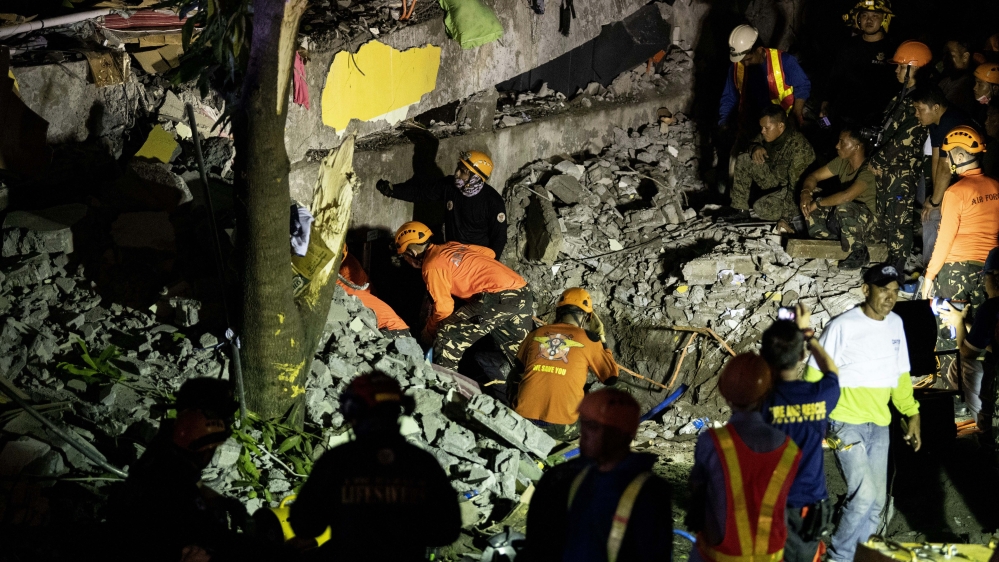Northern Philippines jolted by magnitude 6.1 earthquake
Philippine rescuers were scrambling to reach dozens of people feared buried under a building near Manila that collapsed a day earlier in a powerful earthquake, as the death toll climbed to 11.
The magnitude 6.1 earthquake struck northwest of the capital on Monday, heavily damaging an airport and sending terrified locals fleeing swaying high-rises.
The worst of the damage was in the province of Pampanga, which was the site of most of the 11 fatalities, disaster officials said. Dozens of others were injured by falling rubble, including in Manila.
The toll could rise as crews fanned out across the region to assess damage in isolated hamlets that lost power and communications in one of the area’s strongest tremors in years.
Over 400 aftershocks have been registered since the initial quake, Philippine seismologists said.
Felt #earthquake (#lindol) M6.0 strikes 67 km W of #Manila (#Philippines) 8 min ago. Please report to: https://t.co/bl1j9EN3pt pic.twitter.com/feYTgKGGIg
— EMSC (@LastQuake) April 22, 2019
Scores of rescuers in the town of Porac were wielding cranes and jackhammers to peel back the pancaked concrete structure of a four-floor market building where up to 30 people were unaccounted for.
The quake also damaged several centuries-old churches which were crowded with worshippers in recent days as Philippines marked the Easter holiday.
Father Roland Moraleja, who is based in Porac, said the 18th century belfry of Saint Catherine of Alexandria church collapsed in the quake.
“It was the only part left from the old church,” he told AFP news agency. “The historical value is now gone, but we are hopeful that it will rise again.”
Thousands of travellers were stranded after aviation authorities shut down the secondary Clark Airport, which is located on the site of the former US military installation that lies about an hour’s drive north of the capital.
It was still closed on Tuesday as officials assessed the heavy damage to the terminal building and some cracking on the air traffic control tower.
 |
| Rescue workers search through rubble in Porac, Pampanga. The powerful earthquake set skyscrapers swaying and drove terrified locals into the street. [Noel Celis/AFP] |
Dani Justo, a martial arts instructor, told AFP she was at her southern Manila home when the quake struck.
“The clothes hanging on our line were really swaying. My shih tzu (dog) dropped flat on the ground,” she added.
The Philippines is located on the Pacific Ring of Fire, where about 90 percent of the world’s earthquakes strike.
The last major quake to hit the country was a 7.1-magnitude tremor that killed more than 220 people in the central Philippines in October 2013.
In July 1990, more than 2,400 people were killed on the northern island of Luzon in a magnitude-7.8 quake, one of the strongest tremors ever to hit the country.




